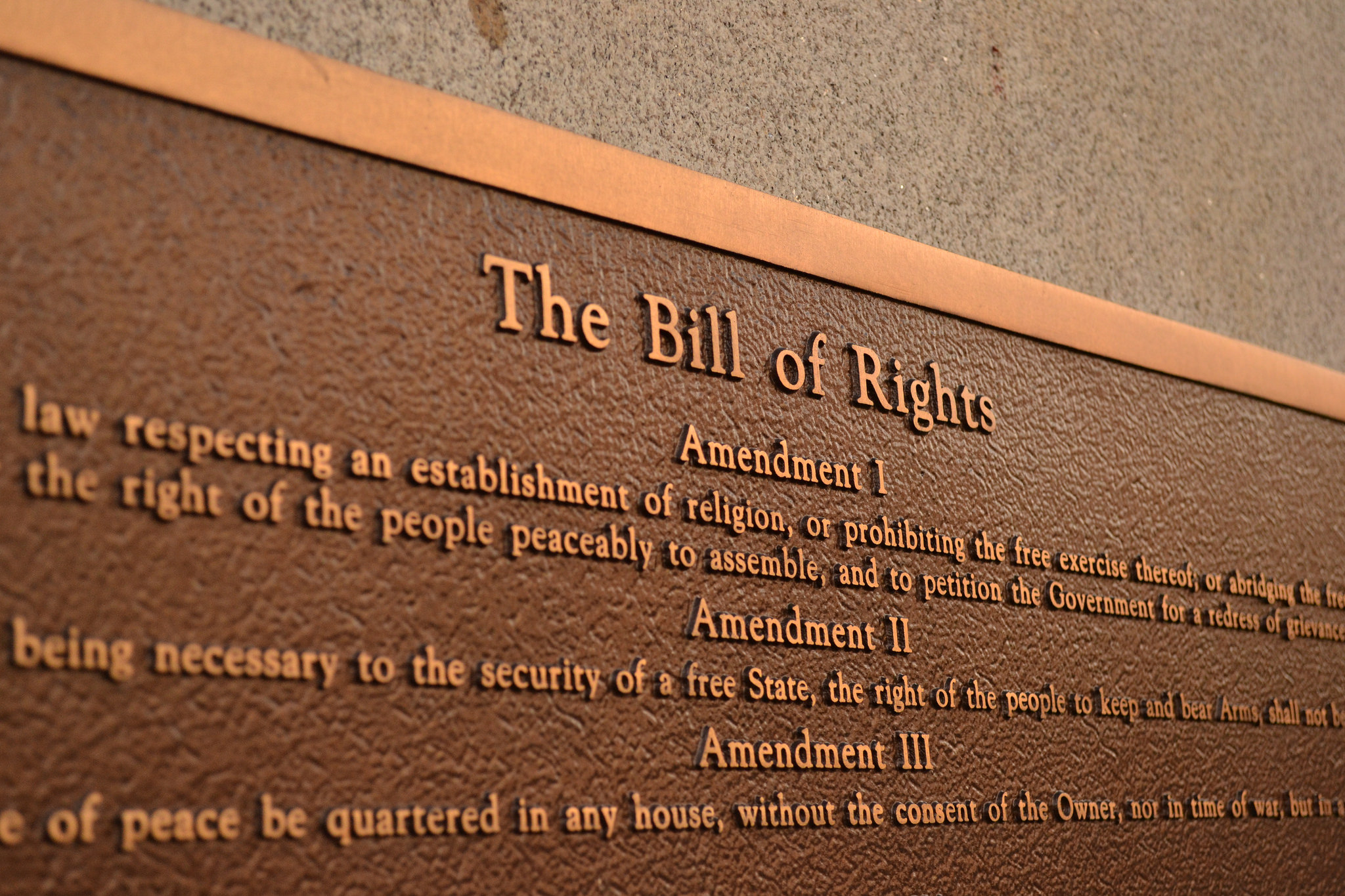
Politics & Society
Trump and the decline of the virtuous presidency

When considering the merits or otherwise of a bill of rights in Australia, there is much to learn from America’s constitutional amendments, even if there are newer models elsewhere
Published 18 July 2017
As issues such as the treatment of Indigenous children in detention, the recognition of same-sex marriage and the accommodation of religious minorities highlight, the protection of human rights in Australia is an immensely important and contentious subject. The treatment of these issues prompts us to consider whether Australia has an adequate system for the protection of human rights.
This raises the question: should Australia follow in the footsteps of most other liberal democracies and adopt a bill of rights?
When we think about bills of rights, the US often comes to mind. Many people are aware of the First Amendment, which protects free speech, the Second Amendment, which protects gun ownership, and the Fifth Amendment, which requires police to inform suspects of their right to remain silent. However, what we can learn from the US is often exaggerated or outright mistaken.

In recent years, the world has turned away from the US for guidance on questions of constitutional design such as whether to have a bill of rights. In 2012, the New York Times reported a study of two scholars finding that ‘The US Constitution appears to be losing its appeal as a model for constitutional drafters elsewhere’.
Australia is part of this trend. When the Australian Capital Territory in 2004 and Victoria in 2006 adopted a bill of rights, and when the federal government considered adopting one in 2009, the most influential models were the newer bills of rights found in Canada, New Zealand and the UK, not the US.

Politics & Society
Trump and the decline of the virtuous presidency
Why, then, might we look to the US when we debate questions related to bills of rights in Australia?
First, the US Bill of Rights is old – over two hundred years old. While its age is often cited as one of the reasons for its declining influence (why consider an older model when there are newer models on offer?), this fact is highly pertinent for Australia.
Australia, like the US, has a Constitution that is very difficult to amend. If we were to include a bill of rights in the Constitution, it could prove hard to update, as has been the case in the US. The US demonstrates that the decisions we make about a bill of rights could last for many decades, if not centuries.
Second, the US Bill of Rights is significant. It has a profound effect on individuals, government, society and culture. For Australians, the experience of the US, more than any other country, helps envisage the potential changes a bill of rights could introduce. While the precise effects in Australia would differ, it is clear a bill of rights has the potential to be far more than a legal document. This provides a basis for debating whether or not we should seek to bring about such transformative change.
Third, the US Bill of Rights is distinct. Most of the newer bills of rights found in countries such as Canada, New Zealand and the UK were drafted to be different from the US model. They were designed to address some of the perceived problems with the US Bill of Rights and to allocate different sets of powers to the three arms of government.

Politics & Society
Q&A: Recognising Australia’s first peoples ... properly
If Australia were to adopt a variation of one of the newer models, it is important to understand what we would be trying to achieve – and that can only occur if we also understand the older model. For example, the UK Human Rights Act, enacted in 1998, is designed to give less power to the judiciary than the US Bill of Rights. It only makes sense to follow the UK’s lead if we decide that we also want to confer less power on the judiciary than in the US.
In recent years, the debate about a bill of rights has fallen off the front pages as the debate about Indigenous recognition took centre stage. The two issues are not, however, completely separate. The proposal to insert a racial non-discrimination clause into the Constitution was opposed on the basis that it would amount to a “one clause bill of rights”.
When the debate arises again, it would be wise to remember that the US still has much to teach us about the promises and perils of a bill of rights.
The Honourable John G. Roberts Jr., Chief Justice of the United States, will discuss key issues facing the law in a public dialogue at the University of Melbourne on Thursday 20 July. The event will be live streamed on the Melbourne Law School website.
Banner image: The Jefferson Memorial in Washington DC/Wikimedia